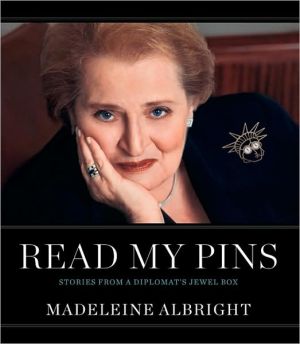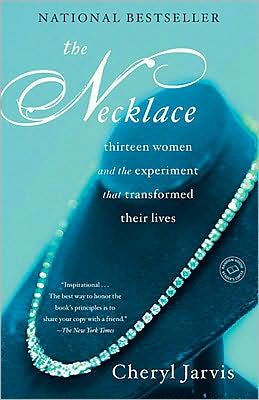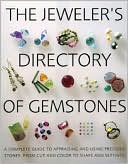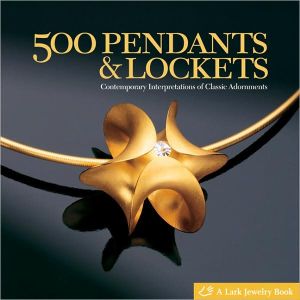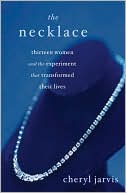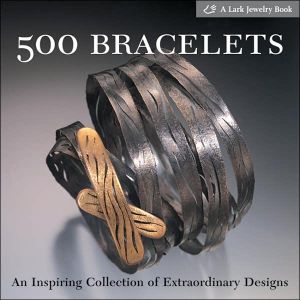Diamond: The History of a Cold-Blooded Love Affair
On a hot morning in May, 1999, three garimpeiros (small-scale miners) found a large pink diamond in the muddy waters of the Abaete River in Brazil, a discovery that captivated the entire diamond trade. Beginning with this dramatic and revealing tale, Matthew Hart embarks on a journey into an obsessive, largely hidden, and utterly fascinating world.\ The geology of diamonds explains how hard it is to find them. Diamonds are accidents of nature, carbon crystals compressed deep underground...
Search in google:
Hart tells the story of the diamond industry like a good whodunit. The intention is both to inform and to entertain, and the commodity ensures a history rife with drama. Readers learn all aspects of the trade, the geology of the stones, the mining systems employed, the history of De Beers, and the new competition De Beers faces from the diamond pipes of the Northwest Territories and the Arctic. Annotation © Book News, Inc., Portland, OR Po Bronson I was fascinated from first page to last.
A Large Pink\ On the morning of May 9, 1999, on the upper reaches of the Rio Abaete in the state of Minas Gerais, Brazil, three garimpeiros anchored their barge in the muddy current and began to suction gravel from the river. A garimpeiro is a small-scale miner; the area he works is called a garimpo. It was a Sunday, usually a day of rest. But the pickings had been poor, and the men needed money, and so they had started their outboard engine and chugged upriver from their camp and put their lines ashore to hold the barge -- a platform on pontoons -- against the current. An awning sheltered them from the hot sun.\ The miners sucked up a cubic yard of material from the riverbed, washed away the muck, and began to sieve the remaining gravel. They worked steadily for two hours without luck, until a thin stone caught in the screen. It was roughly triangular in shape and measured about an inch and a half on the longest side. The garimpeiro working the screen shouted, and waved at his companions to shut off the pump. He washed the stone and rubbed it with his fingers and took it in a cloth and wiped it clean. With few words they passed the stone around. Each man held it to the sunlight, squinted, and agreed that, yes, the stone was definitely pink. They hurriedly cast off their lines and headed the barge to shore. It took them an hour to get to a phone and place a call to Gilmar Campos, who owned the barge they worked on and was therefore a majority owner of the stone.\ Because it was Sunday, the Campos brothers were not in their office in Patos de Minas, eighty miles west of the garimpo on the Abaete. Patos de Minas is a city of 150,000 in western Minas Gerais, an area of historic diamond interest. The Campos brothers operate a truck-parts business in a building where they also trade diamonds. The building faces a man-made lagoon, and on a Sunday the citizens of Patos stroll about with their families on paths that border the sluggish water. On an island in the middle of the pond, cormorants hunch like dispirited monks. In this uneventful Brazilian backwater the truck-parts business fits in. Large, painted letters on the side of the building describe the automotive enterprise. No sign proclaims that the Campos brothers buy and sell rough diamonds worth millions of dollars a year, and that at any time they may have a small pink, or a fabulous green, or a good, clear, 50-carat white sitting up there on the second floor, above the brake pads and the carburetors.\ Gilmar Campos, the eldest brother and head of the family, is a hard man in his forties, with an olive complexion and protuberant eyes and thick, black hair. The youngest brother, Geraldo, athletic-looking and restless, is the head of the truck-parts business. Between the other two in age and station is Gisnei, a former civil servant with an easygoing manner, the reputed peacemaker of the family, the atomic bond that allows the strong personalities of Gilmar and Geraldo to combine.\ "Put down that Gilmar saw it first," Gisnei said of that Sunday in May when the garimpeiros called. "Put down that Gilmar got to the Abaete first, and was the first to see the stone." In fact Geraldo got there first, since he was the one who had his cell phone with him when the garimpeiros phoned. But the order of arrival was a matter of pride, given subsequent events, and Gisnei, soother of egos, wanted to make sure that Gilmar got the credit.\ As they sped east out of Patos in their cars, each of the brothers was thinking the same thing: Was the stone a real pink? The garimpeiros had claimed it was. Most likely, as the brothers knew, it would turn out not to be. A true pink diamond is very rare, and although Brazil is a good source of such stones, the odds were that this one would be a more common brown color, with merely a pinkish tint. Such false pinks will not survive the process of polishing, and will fade into brown. Even so, the stone had another attribute that by itself would have sent the Campos brothers racing out onto the highway and tearing eastward through the countryside -- size.\ The garimpeiros had reported the stone at 81 carats. That weight would be accurate, since the garimpeiros had a diamond scale. If the stone were a true pink as well, it would be worth millions. The brothers gunned their cars recklessly as they turned off the paved highway and onto the red dirt road that led to the river. Gisnei recalled that he was shaking so much he could barely drive. Geraldo arrived first. He got out of his car and the garimpeiros came to meet him. They handed him the stone. He fished out his loupe and studied it, then looked away to clear his head and took a deep breath and looked again. It was a strong pink; he had never seen its like. "I felt great emotion," he would later say. "My feelings were very great." When Gilmar got there, Geraldo handed him the stone. Gilmar, the hard man, took one look and began to cry.\ When the emotions of the moment passed, the brothers thought about the implications of the stone. Gilmar knew he needed help. For one thing, the garimpeiros were insisting the stone was worth millions. They were adamant about it. Since Gilmar owned the barge and the pump, he would have the lion's share of the pink. But the garimpeiros' cut would be one fifth, and they wanted their money quickly. Gilmar decided to bring in a partner, not only to buy out the garimpeiros' interest but to help establish the value of the stone and to sell it.\ Large, colored diamonds are difficult to value. Each is unique. They do not conform to standard pricing conventions of the diamond trade. They are worth what the seller can get for them. The number of potential purchasers is small. The introduction of a newly discovered diamond into this rarefied world is a matter of extraordinary delicacy and bluff. Gilmar Campos did not know where to begin, but he knew someone who did.\ He called Luigi Giglio, a diamond dealer and miner based in Coromandel, eighty miles west of Patos de Minas. The call to Giglio also brought in Stephen Fabian, Giglio's associate. Fabian, an Australian, was a mining engineer and mining-stock analyst who had masterminded a deal that rolled Giglio's Brazilian mining prospects into a company called Black Swan Resources. Fabian had remained in Brazil to run Black Swan.\ Giglio was a powerful figure in the world of Brazilian diamonds. Of medium height, with a characteristically stubbled face, the chain-smoking Giglio could easily have been mistaken for a small player, hunched over a beer late at night in a backstreet cafe in Coromandel, his arms smudged with the dirt of some diamond river. He began trading rough stones while still in his teens. At the age of twenty-three he settled in Coromandel, where he lived at the time of these events, occupying alone the large, walled, ocher villa that was the largest house in town. He ran a thriving diamond-trading business, and a polishing factory, and kept a team of miners busy in the shoreside gravels of a nearby river. Every few months he flew out to Rio de Janeiro to visit his wife and daughters, stayed for a day or two, and then hurried back to Coromandel to continue his restless search for diamonds.\ Brazil was once the world's leading diamond producer. Although its glory days are past, the country retains a warm place in the hearts of diamond traders for the quality of its gems. Brazil's diamonds come from rivers. Such diamonds, called "alluvials," are on average better than stones mined from open pits. The Abaete once yielded an 827-carat stone. Pinks weighing 275 carats and 120 carats, respectively, have come out of the muddy stream. In 1938, garimpeiros on the Rio Santo Antonio do Brito found the 727-carat Presidente Varga, the most famous diamond in Brazil. The same river has produced rough diamonds weighing 602 carats, 460 carats, 400 carats, and 375 carats. An amazing parade of gems has marched out of the diamond valleys in the last 250 years, and some of the more recent have arrived at Giglio's door in the middle of the night, wrapped in rags by excited garimpeiros.\ Garimpeiros occupy a romantic place in the public imagination of Brazil, a country with many poor. The miners' rights derive from centuries of practice, rather than from law, and a fine air of sanctioned banditry burnishes their popular image. A garimpeiro may live in a riverside hovel roofed with plastic, or own a house in town. He may drive a car or go on foot. But regardless of his fortune, one rule never varies: when he finds a diamond, someone pays him for it. In the case of the pink, it did not matter that the barge belonged to Gilmar Campos. The garimpeiros had found the stone; they were entitled to their cut; they must be promptly paid. What is more, they had hit on a price -- $2 million -- and would not be budged.\ The Campos brothers showed the pink to Giglio. Certainly he was captivated by it -- the color was a good, strong pink. The discussions went this way and that. Giglio and the brothers considered an unsightly protuberance at one corner, and agreed it should be cleaved away to improve the appearance. This reduced the weight by two carats. Giglio thought the stone looked very good, and suggested to Fabian that Black Swan make the required investment.\ Fabian did not immediately see the merit of this proposal. Although Giglio had a large block of shares, Black Swan was a public company, listed in Toronto. It had been formed to search for diamond deposits, not to speculate in rare diamonds. Still, Fabian saw that the story of a large and valuable diamond would attract publicity, raising the company's profile with investors. He agreed that Black Swan would buy a share of the pink, with two provisos: Giglio must guarantee a minimum return to the company, and Black Swan must secure an outside valuation. This second stipulation set in motion events that would move the news of the discovery from the small group that held it into the wider diamond world.\ After a series of phone calls and referrals, Fabian found his way to Richard Wake-Walker, a London diamond consultant. Wake-Walker understood the challenge right away: any assessment would hang on color. Was the diamond truly pink? Would the color survive the cutting and polishing of the stone, or would it fade, or perhaps improve? The answers to these questions would be guesses, since the final color of a diamond can never be known until the stone is finished. But there are people competent to make such guesses, and the man Wake-Walker wanted was about to leave London to return to South Africa. Wake-Walker placed a rapid call and managed to intercept Mervin Lifshitz, a Johannesburg diamantaire.\ "Diamantaire," the diamond trade's term for dealer, implies more than commercial acumen. It describes expertness, sagacity, and, at its best, a sympathetic aptitude for diamonds. When Wake-Walker reached him and told him about the pink, Lifshitz was interested at once. He agreed to go to Brazil and take a look at the diamond. But he was pressed for time: business demanded his quick return to South Africa. Moreover, he happened to be without the equipment he would need for such an important examination. So while Wake-Walker's travel agent got onto the computer to work out flights, Lifshitz rushed in a cab to London's diamond quarter, in Hatton Garden, where he bought a loupe, a portable lamp, and a measuring gauge. Then he headed to the airport.\ Lifshitz flew to Zurich and caught the overnight flight to São Paulo. From São Paulo he flew to Belo Horizonte, where Fabian waited with a chartered turboprop to take them to Monte Carmelo. Giglio met them there, shook hands with Lifshitz, and the three drove straight to Giglio's polishing factory in Coromandel, where the stone was locked in a safe. Lifshitz waited in an office while Giglio got the diamond and brought it to the room. Twenty hours after leaving London, Lifshitz unfolded the paper packet.\ "My first reaction was -- it took my breath away," said Lifshitz. "I opened the paper and it freaked me out. I closed it and put it back on a table and walked around the office and then came back. The first impression is that what you are seeing and your mind are not in sync. It's gorgeous. The stone is just gorgeous. Then the second time [he opened the packet] is when I sat down and made an analysis. I spent about three hours with the stone."\ When Lifshitz completed his examination, the three men drove to Giglio's house. Over lunch, Lifshitz told them that the pink was worth a lot, but he didn't want to put a price on it right away. He would review his notes later and send his report to Wake-Walker in London. After a hurried lunch they drove Lifshitz back to the airstrip and the plane took him directly to São Paulo, just in time for the South African Airways weekly flight to Johannesburg.\ By the time he arrived in Johannesburg at eight o'clock the next morning, Lifshitz had been on a plane for the best part of two days, but he went straight to his office, bolted down some coffee, and set to work. In his three hours with the stone he hadmade extensive notes. He spread them out on his desk, set them in order, and marshaled his thoughts. The report that finally emerged contained not only Lifshitz's assessment but also Wake-Walker's thoughts on the state of the market, and in particular the market for the pink. The report on the stone ran to eleven pages. Nestled within it were six key sentences that justified Lifshitz's trip to Brazil, Giglio's keen interest, and the Campos brothers' hopes:\ At first sight the diamond strikes the examiner as being undeniably pink in color. It is my opinion that there is an absence of brown in the stone. Under normal sunlight the rough diamond shows up as being very strong pink with a very even color distribution throughout. It has a very distinct deep pink color in sunlight.\ The rough diamond has a cleaved surface on one face and a rough surface on the opposite. Taking this into account, the pink color is equal in intensity from both sides.\ \ The strength of the finished color would set the price per carat of the cut stone. Hundreds of thousands of dollars per carat, therefore, rode on the answer to the question: How pink would the pink be? Lifshitz addressed this next. The worst case was that the diamond would polish to a brownish pink, and Lifshitz rated that chance at 20 percent. The best scenario was that the stone would yield a "vivid pink," and this was given a 30 percent chance. The most probable outcome, Lifshitz thought, was that the rough would produce polished jewels of a "deep pink" (lighter than "vivid," but very good), and he rated that chance at 50 percent.\ Based on the color outcomes assigned by Lifshitz, Wake-Walker and his team put the pink's value at between $6 million and $20 million. They thought the best way to sell it would be at private tender, and recommended a reserve price, below which the owners would not sell the diamond. They put the reserve at $130,000 a carat, or just over $10 million. Obviously the price was conjectural. It would depend upon who wanted the stone, and how badly they wanted it. The report from Wake-Walker's London group said as much, adding that weak oil prices and the then-recent collapse of Asian stock markets had sidelined a number of important buyers, including, presumably, the oil-rich sultan of Brunei. In spite of these uncertainties, Black Swan paid $2 million to the Campos brothers for a one-sixth share of the stone.\ Now Giglio and the brothers determined on a bold move. Instead of inviting buyers to come to Brazil to see the stone (a common practice with extremely rare goods), they would take the gem straight to New York, the capital city of large diamonds. They wrapped the pink in a cloth and put it in a leather pouch. Gilmar Campos strapped it under his shirt. They flew to Miami, then on to New York. They took the stone to Harry Winston on Fifth Avenue, where they were shown upstairs to the private office of Ronald Winston, son and business successor of the legendary Harry. Winston sent for his chief polisher and one of his veteran salesmen. Gilmar then unwrapped the stone and tossed it onto Winston's blotter. There was a little hush while Winston and his people stared at it. A 79-carat rough pink diamond is worth a drawn breath anywhere, even at Winston's.\ There were guarded murmurs of admiration. The brothers said, yes, it was a fantastic stone, and the Americans could have it for $20 million. Winston said he'd like to think about it. No problem, said Giglio; they took their stone and left, and went out that night and tore up the town, partying into the morning, the big pink diamond nestled in its pouch as they wandered from bar to bar.\ Next day they went back to the Fifth Avenue store. Winston's cutter said he'd like to polish a window onto the stone to take a look inside. A window is a facet polished onto a piece of rough, as uncut diamonds are called, to enable a tactician to assess the interior of a stone before cutting it. In this case, what they wanted to check was the color. Giglio and the brothers refused. Putting in a window, as one of them would later say, would have been like having sex before the Americans had even asked them out on a date. They decided not to stay in New York or show the stone to other dealers, because it might be interpreted as anxiety to sell. They returned to Brazil.\ News of the pink spread quickly, as they had known it would, and soon William Goldberg paid them a visit. Goldberg, a New York diamantaire, is an extravagant character with long white hair and a husky voice, like Marlon Brando's in The Godfather. Goldberg had led the syndicate that bought and cut the Premier Rose, a top-color white diamond that weighed 353.9 carats in the rough. It was Goldberg too who had polished the famous Pumpkin diamond, a vivid orange with a finished weight of 5.54 carats, bought by Harry Winston for $1.3 million. Large stones are notoriously treacherous, and few diamond manufacturers have the resources or the nerve to attempt to polish them.\ The brothers met Goldberg at the airport and drove him to the truck-parts shop. The old dealer mounted the stairs to the second floor, wheezing with the effort, and sat himself at Gilmar Campos's desk. They brought out the pink and Goldberg examined it. He offered them $3 million. The brothers said no. Goldberg thought the diamond was too risky for a higher offer, and returned to New York.\ Stones like the pink excite the romantic instincts of the diamond trade, and its gambler's heart, and reveal the sense of breathlessness and quest that attends the diamond game. I heard about the pink myself in August of that year, when a trader in polished goods phoned me from New York.\ "Did you hear about that big red diamond that somebody's got?" he asked.\ "Red?" I replied.\ "Yes, red. Very very pink. Red."\ "A blood red?"\ "It's very very red. Some guy from, like, Ohio, brought it into town. He inherited it. He had no idea what it was, and took it around to see what it was worth. He showed it around the street. Some counter guy looked at it and freaked."\ That the Campos brothers' pink had shot into this stratosphere of rumor was not surprising. Great diamonds gather such misinformation all the time, and it does not dull their glitter. A little harmless balderdash is part of the proper business of the trade.\ The seller of a rough diamond wants to leave plenty of room for speculation. As Wake-Walker had said, "Sometimes the greater the discretion that such a stone can be handled with adds to its value. It is not necessarily helpful for the vendor of the polished if the whole world knows how much the rough cost." Giglio and the brothers followed this advice. Details about the pink were hoarded frugally. The diamond street supplied from its own imagination whatever it could not learn. Rumor grew on rumor in a steady and inevitable seduction. I became snared in this myself, and determined to track down the diamond, and by the time I had located Fabian and obtained a copy of Wake-Walker's report, infatuation had me in her arms. I had to see the pink before it was cut.
Diamond 1. A Large Pink\ 2. The Diamond Seas\ 3. The Middle Empire\ 4. The Long Hunt\ 5. Rush in the Barrens\ 6. The End of the Old Cartel\ 7. The Manufacture of Desire\ 8. Bad Goods\ 9. The Diamond Wars\ 10. Diamond Cutter\ 11. Rosy Blue\ 12. The Dogrib Country Appendix Selected Bibliography Acknowledgments Index
\ From Barnes & NobleBarnes & Noble Discover Great New Writers\ One night in 1948, an ad agency copywriter, already exhausted from writing the material for an important presentation the following day, realized she had yet to come up with the all-important signature line. "I put my head down and said, 'Please God, send me a line,' " she later recalled. Inspiration struck. The line, arguably the greatest advertising slogan of the 20th century: "A diamond is forever." The client: DeBeers. \ Matthew Hart's Diamond is as much the story of DeBeers -- the most effective and longest-running cartel in modern business history -- as it is the story of the independent miners whose entire lives can change course through the discovery of a single magnificent stone, and of the geologists and speculators who spend years searching the world for the volcanic kimberlite "pipes" capable of yielding millions of dollars' worth of diamonds over a succession of years.\ From Africa's Diamond Coast to the Manhattan offices of Harry Winston, Hart follows the quirky and sometimes perilous diamond trail, encountering characters as extraordinary and unique as the stones they pursue. But diamonds, made precious by their ability to capture light, also have their dark side. "Malfeasance rustles in the background of the diamond world like a snake in tall grass," notes Hart, who documents the incessant thievery and foul play that characterizes the industry and also finances brutal conflicts in Africa.\ In a book as multifaceted and tantalizing as the gems themselves, Matthew Hart has captured the essence of a stone that is itself a wondrous accident of nature, one that has given rise to an obsessive, murky, and utterly fascinating world. (Winter 2002 Selection)\ \ \ \ \ \ BronsonI was fascinated from first page to last.\ \ \ Jon Lee AndersonMatthew Hart is a gifted storyteller and a fine writer. Diamond is a simply delightful book.\ \ \ \ \ JungerHart tells a great, great story while explaining one of the world's most mysterious industries. The book is first-rate...\ \ \ \ \ Library JournalNo other gem holds the allure and mystery of the diamond. In this book, journalist and author Hart (Golden Giant, 1985) offers a brief history of this supreme gem and the industry surrounding it. Part science text, part business history, part biography, and part travelog, the book provides some fascinating glimpses into the world of diamonds but can appear disjointed. Hart writes about South Africa's long-lived De Beers cartel and the attempts to unseat it, the unscrupulous characters of the trade, and the many aspects of the business, from miners to retailers. Taken separately, the anecdotes are interesting, even engaging, but throughout the book, the reader is left feeling that there is more to the story. A significant portion of the work covers the recent diamond finds in Canada, which Kevin Krajick's Barren Lands: An Epic Search for Diamonds in the North American Arctic (W. H. Freeman, 2001) covers in greater detailed study. Recommended for large business and business history collections. (Index not seen.) Mike Miller, Dallas P.L. Copyright 2001 Cahners Business Information.\ \ \ \ \ Po BronsonI was fascinated from first page to last.\ \ \ \ \ Publisher's WeeklyAny book that details the diamond trade must contend with the brilliance of Stefan Kanfer's 1993 gem, The Last Empire. And Hart's book picks up roughly where Empire left off. When Hart (editor of the New York trade magazine Rapaport Diamond Report) traces the diamond frenzy that struck Canada in the 1990s, his writing is as polished and fiery as when Kanfer re-created the machinations of Cecil Rhodes and Barney Barnato, the Romulus and Remus of the South African diamond cartel. But when the two mine the same territory, Hart's book looks like indicator minerals in comparison: Hart is less successful when he depicts De Beers's origins, the creation of the company's monopoly, and Ernest Oppenheimer, who turned De Beers into a profitable company. Hart, however, has a good eye for intriguing figures in the industry, including a part-wolf sled dog named Thor who was suspected of espionage. In the end, the author expertly takes readers into theft-riven African mines, the back rooms of Brazilian dealers, the polishing rooms in both midtown Manhattan and India's slums, and the sorting rooms in London. (Nov.) Copyright 2001 Cahners Business Information.\ \ \ \ \ Sebastian JungerHart tells a great, great story while explaining one of the world's most mysterious industries. The book is first-rate...\ \ \ \ \ Susan OrleanDiamond is a clear-eyed, sharp, intriguing book about the gemstone that has enthralled human beings for centuries.\ \ \ \ \ Publishers WeeklyAny book that details the diamond trade must contend with the brilliance of Stefan Kanfer's 1993 gem, The Last Empire. And Hart's book picks up roughly where Empire left off. When Hart (editor of the New York trade magazine Rapaport Diamond Report) traces the diamond frenzy that struck Canada in the 1990s, his writing is as polished and fiery as when Kanfer re-created the machinations of Cecil Rhodes and Barney Barnato, the Romulus and Remus of the South African diamond cartel. But when the two mine the same territory, Hart's book looks like indicator minerals in comparison: Hart is less successful when he depicts De Beers's origins, the creation of the company's monopoly, and Ernest Oppenheimer, who turned De Beers into a profitable company. Hart, however, has a good eye for intriguing figures in the industry, including a part-wolf sled dog named Thor who was suspected of espionage. In the end, the author expertly takes readers into theft-riven African mines, the back rooms of Brazilian dealers, the polishing rooms in both midtown Manhattan and India's slums, and the sorting rooms in London. (Nov.) Copyright 2001 Cahners Business Information.\ \ \ \ \ Library JournalNo other gem holds the allure and mystery of the diamond. In this book, journalist and author Hart (Golden Giant, 1985) offers a brief history of this supreme gem and the industry surrounding it. Part science text, part business history, part biography, and part travelog, the book provides some fascinating glimpses into the world of diamonds but can appear disjointed. Hart writes about South Africa's long-lived De Beers cartel and the attempts to unseat it, the unscrupulous characters of the trade, and the many aspects of the business, from miners to retailers. Taken separately, the anecdotes are interesting, even engaging, but throughout the book, the reader is left feeling that there is more to the story. A significant portion of the work covers the recent diamond finds in Canada, which Kevin Krajick's Barren Lands: An Epic Search for Diamonds in the North American Arctic (W. H. Freeman, 2001) covers in greater detailed study. Recommended for large business and business history collections. (Index not seen.) Mike Miller, Dallas P.L. Copyright 2001 Cahners Business Information.\ \

